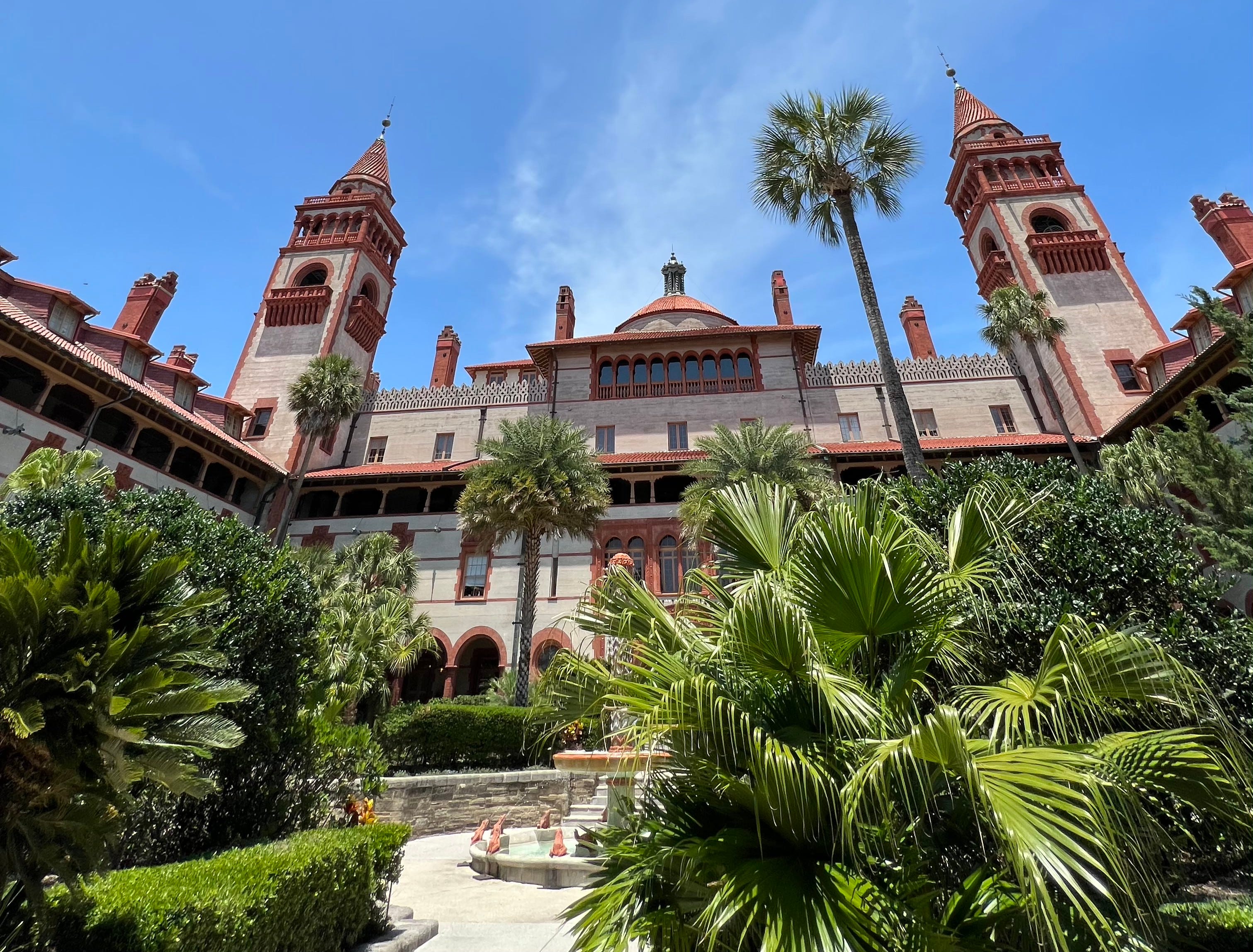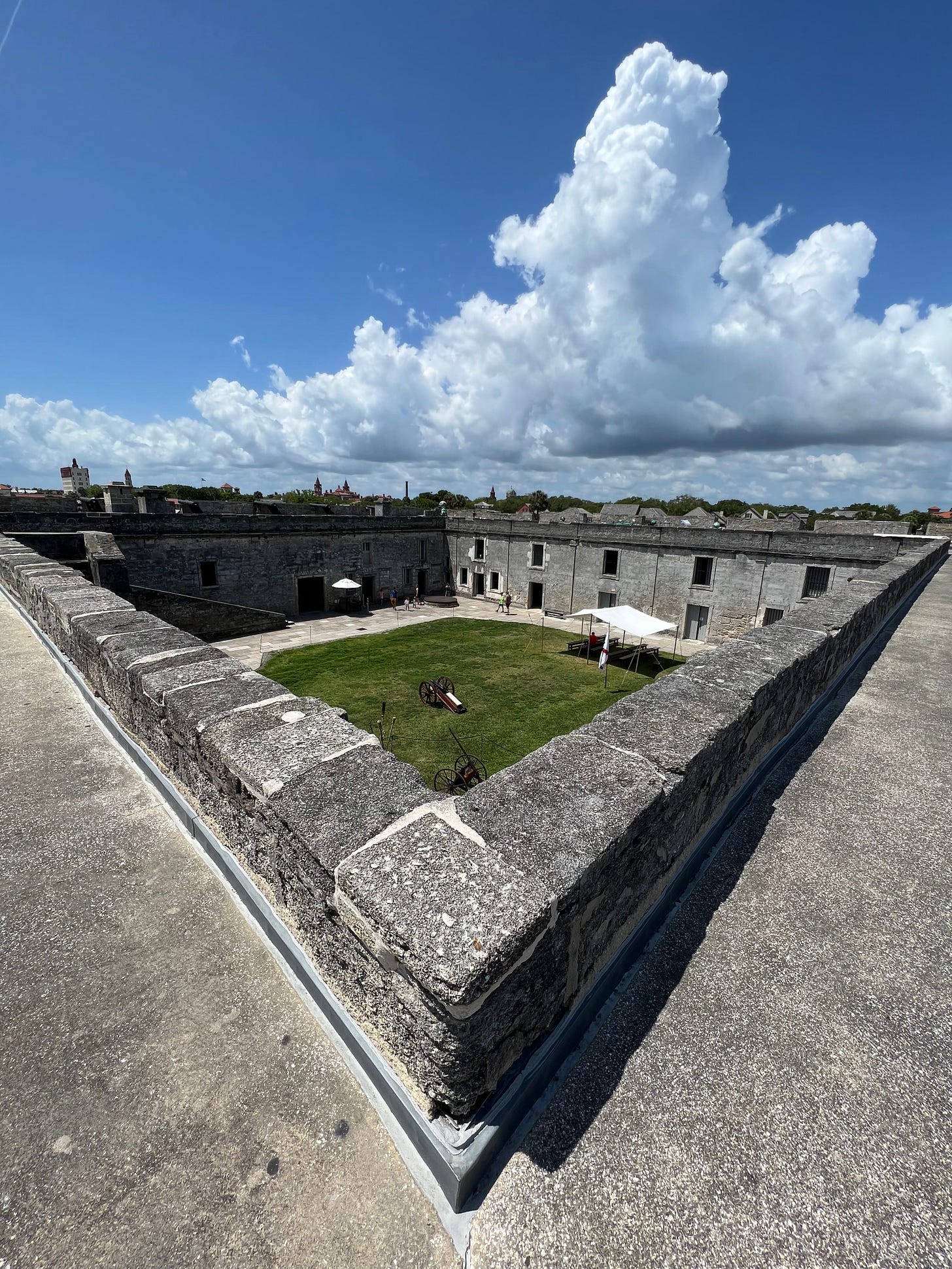EDITOR’S NOTE: This is an ongoing series about setting out to hike 32 miles around the island of Manhattan in a rainstorm and the thousand-mile road that led there.
It was 6:35 a.m., but beads of sweat were already pouring off my forehead by the time I’d hurried down the steps and made it into my awaiting Uber. The mask strapped to my face made the heat seem infinitely worse.
I’d just been wrestling a duffle bag.
I had to wake up deceptively early to catch my 8:26 a.m. flight out of SFO. I waited until the last minute to put my suit into my duffel, hoping to limit the chances of wrinkling it. I finally corralled it into the overstuffed bag and, with a remarkable effort, managed to zip it shut only to realize that I had, inadvertently, packed away my glasses, as well.
I had two goals for the flight — to write the speech that I was to deliver at the rehearsal dinner and to prepare for a recruitment call that, out of nowhere, had materialized a day earlier when a friend of a friend reached out to gauge my interest in joining his sports gambling startup.
I managed to pen — literally by hand in a tiny notebook — the speech while the plane was delayed, taxiing around on the runway. We finally lifted into the sky at 8:54 a.m., some 30 minutes after we’d been scheduled to take off.
Upon landing in Orlando, I immediately regretted wearing a sturdy flannel shirt. The heat, and most memorably the humidity, was heavy. Inexplicably, there was an inviting, if shallow, decorative pool right next to the rental car garage. For some reason, which no one at the counter had even so much as mentioned to me, Hertz had upgraded me from a nondescript sedan to a sharp, black midsized SUV. On the 125-mile drive up to St. Augustine, I stopped and found some Cajun Dill Gator Tators, which I simply couldn’t pass up.
When I first learned that the wedding was set to take place in St. Augustine, which brands itself as the oldest city in the United States, I aspired to learn all the history of the place.
I failed miserably in that goal. There’s just too much to soak up.
Founded in 1565, St. Augustine is most accurately described as the longest continuously inhabited European-established settlement in what is now the contiguous United States. That doesn’t have the same ring as “oldest city in America” but at least it gives the slightest of nods to the vast history of Native Americans that came before.
Perched on the Atlantic coast in the northeastern corner of Florida, with the San Sebastian, Matanzas and Tolomato Rivers swirling all around, St. Augustine is a charming place to spend a day, weekend or much longer than that. I realized that as soon as I bounded down the steps of my stylishly-appointed Airbnb and looked directly across the street at a couple of pastel colored houses.
It was like being dropped into an outpost from the Spanish Empire.
The trees and greenery were everywhere. All the trees in St. Augustine — and beyond — were covered, draped in green webs, Spanish moss, I later learned.
The Historic District is flooded with sights to see like Flagler College, now a liberal arts school, originally the Ponce de Leon Hotel, a luxury resort built in the Spanish Renaissance style by Standard Oil co-founder Henry M. Flagler in 1888. On my final day in St. Augustine, I wandered into the courtyard to explore the grounds, walking past a central fountain and soaring palms. It felt like I had stepped into the Water Gardens, the summer palace in Dorne, in George R.R. Martin’s Game of Thrones.
On my original run through the city, I keep going, past cannons on the street and a big church, the Cathedral Basilica of St. Augustine, with its towering steeple. I continued on through the Plaza de la Constitución, originally prescribed by the Royal Spanish Ordinances in 1573, and out toward the water where the Bridge of Lions (logically guarded by two white, marble lions) spans the Matanzas River across to Anastasia Island.
Up the coast, I could see the place I had most looked forward to exploring on the trip, Castillo de San Marcos, the giant stone fort. I visited it three times in four days, but on that first morning, I didn’t have time to go in. So, I ran all around it and through the dried up moats.
I had to make it back to my Airbnb for that recruitment call with the friend of a friend whose startup wanted to become “the Robinhood of sports gambling.” In the moment, that sounded smart, inspiring. But, as time passed, I stopped to wonder, “What the hell does that even mean?”
I did a remarkable amount of sight seeing in my time in St. Augustine, but still I found myself lamenting — and ready to go back — because there is still so much more to see.
I walked to the St. Augustine Lighthouse, but, regrettably, didn’t get to climb it because it was under construction. On the way back, I got stuck on the Bridge of Lions when the draw bridge was pulled up to let some boats sail through. I ever so briefly toured the Lightner Museum, which, like Flagler College across the street, is a stunning example of the Spanish Renaissance style. While searching for souvenirs in a small shop, I came across Confederate flags, sold in a value pack. On a narrow, historic street, there was a building for sale. Among the amenities listed were two storefronts, two bathrooms, an “original (1720 jail)” — I can’t explain that one — two Spanish villas, a buildable lot and six parking spots. The ask was $1.65 million, in cash, adding parenthetically, “NO BITCOIN!” Presciently, that was before the latest crash. Affixed to the bottom of the for sale sign was the following addendum:
SOCIAL JUSTICE
DEFINITION: SOCIALISM
WISE UP AMERICANS!
On the second day in town, I went to the Fountain of Youth — officially the Fountain of Youth Archaeological Park — with my Uncle Jon and Aunt Gina, and literally drank from the Spring of Eternal Hope. A sign (accurately) warned not to fill your cup all the way because the water didn’t taste very good. I felt immediately refreshed.
While doing some post-trip research, I discovered that there is neither historical nor archaeological evidence to support the claim that this was the spot were Ponce de Leon, the Spanish explorer and conquistador, had landed back in 1513.
For reasons I cannot explain, peacocks wandered all around the 15-acre grounds, which include historic reconstructions of buildings from the Spanish Empire and the Timucua, the group of Native Americans who lived there before a series of Europeans arrived.
From the top of the Spanish Watchtower, a sturdy wooden structure, we looked out past the marshes of the Matanzas River, to the sandy beaches of Vilano Point where the St. Augustine Inlet meets the Atlantic and where, in 1586, Sir Francis Drake, the English explorer best known for circumnavigating the globe, rode in with his fleet and captured the city, burning it to the ground.
On my final day in St. Augustine, once my speech had been delivered, with aplomb, and the wedding had been celebrated, flawlessly, on a beautiful rooftop overlooking the water, I had a chance to properly explore the fort.
If you get the chance to tour a 350-year-old fortress — a stone vestige of a superpower long since disappeared from the global geopolitical stage — take it.
From the air, Castillo de San Marcos, which is the oldest masonry fort in the United States, looks like a star with four sharp points, and at its center a square, grassy courtyard is cut out.
The aforementioned raid by Sir Francis Drake set in motion a sequence of events that led to the fort, as it can be seen today, more or less. Nine wooden forts were built in nearby locations before another English raid finally convinced Mariana of Austria, the Queen Regent of Spain, who was a member of the House of Hapsburg and whose father was the Holy Roman Emperor, to approve the building of a stone structure. Construction began in 1672 and was completed in 1695.
Standing along the walls of the fort, looking out at the green grass and the palms swaying in the wind, and the Cross of Burgundy (the long-ago, red and white standard of the Spanish Empire) snapping in the afternoon breeze and the waters of Matanzas Bay, I was reminded of my trip to Cuba. In 2018, I’d been standing on a similar perch at Fortaleza de San Carlos de la Cabaña, or, more simply, La Cabaña, the old stone fortress which, along with Morro Castle, guards the entrance into Havana Harbor.
Departing from Miami, I bombed into Havana on an absurdly early morning flight. It was just 51 minutes to Cuba. The clouds, seemingly motionless, hung over and across the horizon, like a giant armada rolling in. Finally the southern most tip of the Floridian tail vanished from sight and blue water stretched out. The plane tilted, making a wide turn before swooping down and beginning its descent into Havana.
I rambled all over Old Havana, taking in the sights, the history, the architecture, the decaying — yet beautiful — buildings, the classic cars, the cannons, Hemingway’s bars, the state-sanctioned propaganda — SOCIALISMO O MUERTE — scrawled on walls, the unrelenting poverty.
I can’t wait to go back.
The National Park Service has run the Castillo since 1933 — just the latest in a long line of stewards. The fort has changed hands five times, but, remarkably, it has never been taken by force. It’s a dizzying history.
The Spanish held it from 1695 to 1763 before the British took control as part of the Treaty of Paris, which ended the Seven Years’ War. But that lasted just 20 years. After the Revolutionary War, the Peace of Paris returned Florida, and, by extension, the fort, to the Spanish, who, prudently, as it turned out, had aligned themselves with the insurgents. The Spanish then lost it for good in 1821 when they ceded Florida to the United States. When Florida seceded from the Union in 1861, the federal government left behind just a single soldier as the caretaker of the fort, which by that point in time was used as a warehouse for old cannons and arms. That soldier, Sergeant Henry Douglas, demanded a receipt for the government’s property before surrendering the fort. So, he got his receipt and the Confederates got their fort. Within 14 months, the Confederate troops had evacuated the city and the Union was back in charge by March of 1862.
Along the way, the fort has been known as Castillo de San Marcos, then Fort St. Mark, then Castillo de San Marcos (again), then Fort Marion and then back to Castillo de San Marcos for a final time.
The fort also holds an ugly, problematic history that mirrors that of the land, the country upon which it was built. Native Americans made up the largest force of workers who toiled away, building the Castillo. The laborers who quarried and moved the stone made 1 real per day, which in 2020 dollars, is about $2.57, according to the National Park Service. Africans, both free and enslaved, also made up a segment of the labor force. In the 19th century, Native Americans were imprisoned in the Castillo on three separate occasions. In 1900, the fort was decommissioned after 205 years of operation.
These days, it costs $15 to enter and your pass is good for a week.








Beat O town (Orinda) - Thanks for sharing - On the list